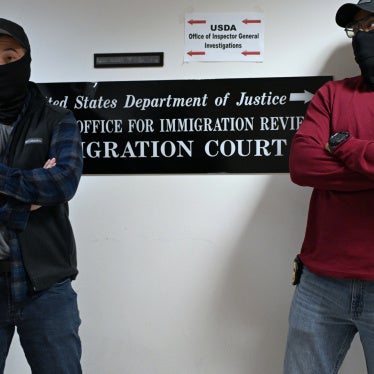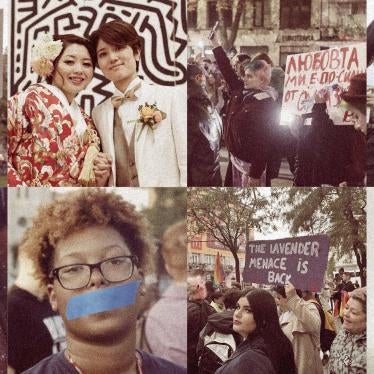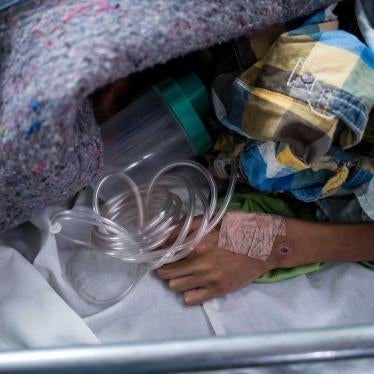May 17, 2022
The Honorable Nancy Pelosi
Speaker of the House
H-232, The Capitol
Washington, DC 20515
The Honorable Steny Hoyer
House Majority Leader
H-107, The Capitol
Washington, DC 20515
The Honorable James Clyburn
House Majority Whip
H-329, The Capitol
Washington, DC 20515
The Honorable Jerrold Nadler
House Judiciary Chair
2142 Rayburn
Washington, DC 20515
The Honorable Chuck Schumer
Senate Majority Leader
S-230, The Capitol
Washington, DC 20515
The Honorable Dick Durbin
Senate Judiciary Chair
224 Dirksen
Washington, DC 20515
Dear Speaker Pelosi, Leader Hoyer, Whip Clyburn, Chair Nadler, Leader Schumer, and Chair Durbin:
We, the undersigned organizations, are writing to express our concerns regarding failed and overly punitive practices exacerbating the disproportionate incarceration of Black and Brown people, which the Congress is embracing in a slate of bills it will take up during Police Week. We are particularly troubled by proposals that increase investments in law enforcement in response to divisive rhetoric around violent crime that has historically been used to increase policing and incarceration of Black and Brown people. The United States already has the highest rate of incarceration in the world,[1] with Black people substantially overrepresented amongst those incarcerated.[2] We urge you not to take up any legislation that perpetuates these harmful realities and doubles down on the broken and discriminatory criminalization-first approach to public safety.
Calls to increase the footprint of law enforcement with more funding — with no accountability and no efforts to address and interrupt the root causes of violence — undermine safety and advance policies that rob communities of stability and security. Instead of marking Police Week by supporting increased, unchecked resourcing of law enforcement, we are asking you to pivot away from the so-called “tough on crime” policies that rely on law enforcement alone. We ask that you build safety by investing in the actual communities suffering from violence, implementing proven prevention strategies, and investing in the resources and systems that make all communities thrive.
It is true that some forms of violent crime have increased during a global pandemic that has exacerbated economic and socio-emotional distress. This current instability associated with the COVID-19 pandemic is built upon the chronic, decades-long underinvestment in communities, as well as the continued ambivalence toward addressing the root causes of violence such as income inequality, lack of job prospects, a dearth of affordable housing, and insufficient public health infrastructure.[3] Crime rates alone provide insufficient data to evaluate the causes of and solutions to the current situation in many communities, both urban and rural, especially as it pertains to violence. Social determinants of health and access to stabilizing resources like housing, mental health services, and living-wage jobs are all part of what makes communities safe and must be considered when developing legislative solutions to instability and violence.
For far too long, we have relied on criminalization, incarceration, and policing as the ways to create public safety in our communities. This approach — driven largely by investments in the criminal-legal system — has failed our nation, and particularly its communities of color. It is time we recognize that true public safety is brought about by equitable access to quality education, health care, affordable housing, and economic opportunities. If we are to provide genuine safety to everyone, Congress must begin investing in non-carceral, community-led programs, rather than continuing to increase funding for policing tactics that have little prophylactic impact on crime rates.[4] Since 2000, increased incarceration has had an almost zero effect on crime, including violent crime.[5]
Yet, the evidence suggests that community-based investments in non-carceral programs — not investments in the criminal-legal system — are most effective at keeping people safe and enhancing community wellbeing.[6] Initiatives with proven track records,[7] such as violence interruption and prevention programs, neighborhood mediation programs, and safe passage to school programs, should be supported. They should be implemented in concert with key system investments at the community level that improve access to housing, quality education, health care, and economic opportunity. Safe communities are those where people have access to affordable health care and mental health services, where schools have the resources necessary to provide a quality education to all children, and where people have safe and affordable housing.
So-called “tough on crime” policies have neither made us safe nor served justice for anyone. These polices have led to the targeting of Black and Brown people by law enforcement and the public[8] based on a dangerous and wrongful association of Blackness with criminality.[9] Elected officials and policymakers have consistently made our communities less safe by upholding outdated policies that continue the shameful mass incarceration of Black and Brown people and perpetuate a history of structural racism and anti-Blackness in this country. We cannot arrest or imprison our way to safety. Investing in programs and strategies that address the root causes of instability in communities is the best way to increase the safety of all people in America.
We respectfully ask that you use this Police Week to center justice and humanity over criminalization. If you have any questions, please feel free to contact Chloé White, policy counsel at The Leadership Conference, at white@civilrights.org, Puneet Cheema, manager of the Justice in Public Safety Project at the NAACP Legal Defense and Educational Fund, at pcheema@naacpldf.org, or Sakira Cook, senior director of government affairs at Color of Change, at sakira.cook@colorofchange.org.
Sincerely,
American Civil Liberties Union
Color of Change
Drug Policy Alliance
Human Rights Watch
Lawyers’ Committee for Civil Rights Under Law
The Leadership Conference on Civil and Human Rights
NAACP
NAACP Legal Defense and Educational Fund
National Association of Criminal Defense Lawyers
Southern Poverty Law Center Action Fund
cc: The Honorable Sheila Jackson Lee, Chair, House Judiciary Crime Subcommittee
The Honorable Cory Booker, Chair, Senate Judiciary Crime Subcommittee
[1] See Widra, Emily, and Herring, Tiana. “States of Incarceration: The Global Context 2021.” Prison Policy Initiative. Sep. 2021. https://www.prisonpolicy.org/global/2021.html.
[2] See Sawyer, Wendy, and Wagner, Peter. “Mass Incarceration: The Whole Pie 2022.” Prison Policy Initiative. March 14, 2022. https://www.prisonpolicy.org/reports/pie2022.html;“Race and ethnicity.” Prison Policy Initiative. https://www.prisonpolicy.org/research/race_and_ethnicity/#:~:text=Percent%20of%20people%20in%20prison,who%20are%20Black%3A%2048%25%20%2B (noting that while Black people make up only 13 percent of the population of the United States, they comprise 40 percent of people in jails and prisons, and 48 percent of people serving life, life without parole, or “virtual life” sentences).
[3] See, e.g., Love, Hanna. “Want to reduce violence? Invest in place.” The Brookings Institution. Nov. 16, 2021. https://www.brookings.edu/research/want-to-reduce-violence-invest-in-place/.
[4] See, e.g., Bump, Philip. “Over the past 60 years, more spending on police hasn’t necessarily meant less crime.” The Washington Post. June 7, 2020. https://www.washingtonpost.com/politics/2020/06/07/over-past-60-years-more-spending-police-hasnt-necessarily-meant-less-crime/.
[5] See, e.g., Brooke-Eisen, Lauren, et al. “What Caused the Crime Decline?” Brennan Center for Justice. 2015. Pg. 79. https://www.brennancenter.org/our-work/research-reports/what-caused-crime-decline (“This report demonstrates that when other variables are controlled for, increasing incarceration had a minimal effect on reducing property crime in the 1990s and no effect on violent crime. In the 2000s, increased incarceration had no effect on violent crime and accounted for less than one-hundredth of the decade’s property crime drop”).
[6] See, e.g., Bondurant, S. et al. “Substance abuse treatment centers and local crime.” Journal of Urban Economics. Vol 104, Issue C. 2018. Pgs. 124-133; Sharkey, P. et al. “Community and the Crime Decline: The Causal Effect of Local Nonprofits on Violent Crime.” American Sociological Review. Vol. 82(6). 2017. Pgs. 1214-1240; Heller, S. et al. “Thinking Fast and Slow? Some field experiments to reduce crime and dropout in Chicago.” The Quarterly Journal of Economics. Vol 132(1). 2017. Pgs. 1-54. https://doi.org/10.1093/qje/qjw033.
[7] See, e.g., “From Pain to Progress: Confronting the Struggle on the Front Lines of America’s Gun Violence Crisis.” Amnesty International. June 2021. https://heroes.amnestyusa.org/wp-content/uploads/2021/06/Amnesty-EGVReport-V5.pdf/; “Reducing Violence Without Police: A Review of Research Evidence. Arnold Ventures and the John Jay College Research Advisory Group on Preventing and Reducing Community Violence. Nov. 2020. https://johnjayrec.nyc/wp-content/uploads/2020/11/AV20201109.pdf; “Investing in Intervention.” Giffords Law Center. Feb. 2018. https://giffords.org/wp-content/uploads/2018/02/Investing-in-Intervention-02.14.18.pdf.
[8] See, e.g., Smith, Jonathan, et al. “Investigation Report and Recommendations regarding Elijah McClain.” City of Aurora, Colorado. Pgs. 18-19. Feb. 22, 202. https://cdn5-hosted.civiclive.com/UserFiles/Servers/Server_1881137/File/News%20Items/Investigation%20Report%20and%20Recommendations%20(FINAL).pdf (911 caller described Elijah McClain as “sketchy” and “suspicious”).
[9] See, e.g., Eberhardt, Dr. Jennifer L., et al., “Seeing Black: Race, Crime, and Visual Processing.” Journal of Personality and Social Psychology. Vol 8(6). 2004. Pgs. 876-93. https://web.stanford.edu/~eberhard/downloads/2004-SeeingBlackRaceCrimeandVisualProcessing.pdf. See also Payne, Brian Keith. “Prejudice and Perception: The Role of Automatic and Controlled Processes in Misperceiving a Weapon.” Journal of Personality and Social Psychology. Vol 81(2). 2001. Pgs. 181-92. http://web.missouri.edu/~segerti/capstone/PayneBias.pdf (finding that exposure to Black faces facilitated the categorization of crime-relevant objects).








